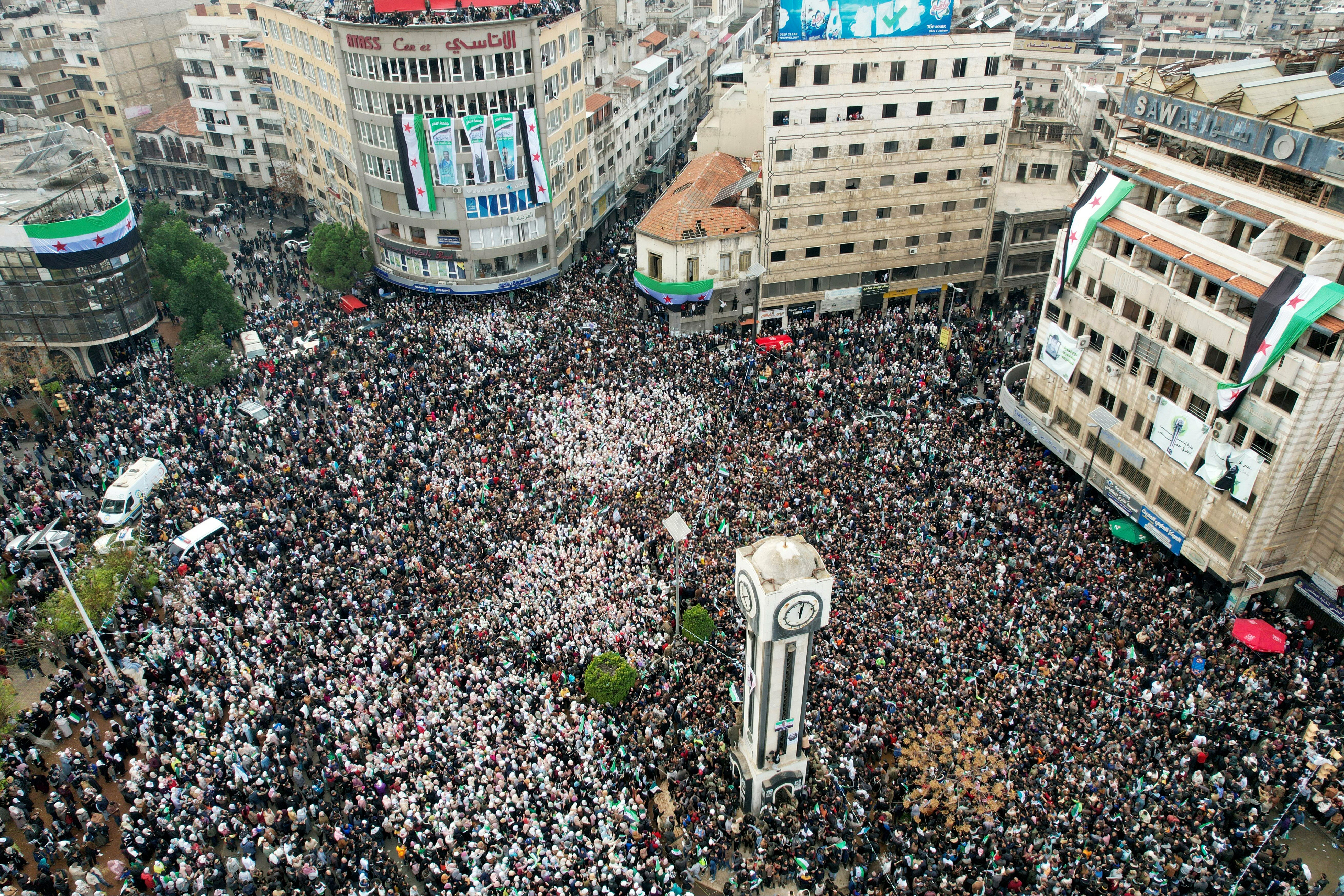Ousted Syrian leader Bashar al-Assad has made his first comments since his regime was defeated by rebels in a lightning-quick military advance.
Just over a week since he was removed from power, Assad has claimed he was evacuated to Russia by Moscow’s military after the base he was hiding in came under drone attack.
Assad claimed he had no intention of leaving the country, but was evacuated from the Hmeimim base in Syria on the evening of 8 December, after leaving Damascus that morning with opposition fighters closing in.

The comment, in a statement that was published on the Syrian presidency’s Telegram channel and dated 16 December from Moscow, was Assad’s first in public since he was toppled.
Assad said in the statement on his Facebook page that he had remained in Damascus “carrying out my duties” until rebel forces made it into the city. It was only then, in coordination with Russian allies, that he was moved to Moscow’s Hmeimim airbase in the coastal province of Latakia, where he claimed he planned to keep fighting “against the terrorist onslaught.”
The former leader, whose family had ruled Syria with an iron fist for 50 years, said that after the Russian base came under attack by drones, the Russians decided to move him to Moscow.
He sought to dismiss any speculation that he sought to flee or resign, saying in the English version of his statement: “At no point during these events did I consider stepping down or seeking refuge, nor was such a proposal made by any individual or party.”

An investigation by Reuters revealed that Assad’s final days were marked by failed attempts to secure external support. After rebels swept through Aleppo and Homs and advanced toward Damascus, Assad reportedly sought refuge in the United Arab Emirates, but the Emiratis declined, fearing backlash due to his international sanctions.
Moscow, unwilling to mount a military rescue, reportedly leveraged diplomatic channels to facilitate Assad’s departure, with one Western security source telling Reuters: “Lavrov [Russia’s foreign minister Sergei Lavrov] did whatever he could.”
One source told Reuters that Assad’s presidential office manager believed he was going home for the evening, but instead, he discreetly departed for the airport. His wife Asma and their three children were already waiting for him in Moscow, according to former aides and a regional official.
The ousted leader also framed himself in the statement as a loyal defender of Syria, claiming that his commitment to the country’s sovereignty had remained unwavering throughout the war. He described staying with his family and people during “the darkest years of the war,” facing threats of terrorism, bombardment and incursions into Damascus.

He claimed he had “never sought positions for personal gain” and instead considered himself “a custodian of a national project, supported by the faith of the Syrian people.”
The former government led by president Assad was responsible for the systematic and widespread torture of the country’s civilians.
Last year, the UN estimated that the conflict had killed more than 300,000 civilians by the end of March 2021. In 2021, analysts calculated that another 250,000 fighters had been killed in the first ten years of the civil war. The Syrian Network for Human Rights (SNHR) estimated that government forces and allied Iranian militias were responsible for around 87% of those deaths.
In addition to those killed, at least 15,000 people are believed to have died as a result of torture or in the regime’s jail system and an estimated 130,000 are still missing.
Assad’s government also institutionalised torture according to human rights groups. The infamous Sednaya prison complex was dubbed the “human slaughterhouse” where jailers carried out mass hangings and executions, Amnesty International said in a 2017 report.
More than half a century of brutal rule by the Assad regime, culminating in thirteen years of civil war, has been marked by mass arrests, enforced disappearances, extrajudicial killings and executions resulting in tens of thousands missing.
The statement is concluded by pledging to provide a “detailed account” of the final days of his regime when the time allowed.

